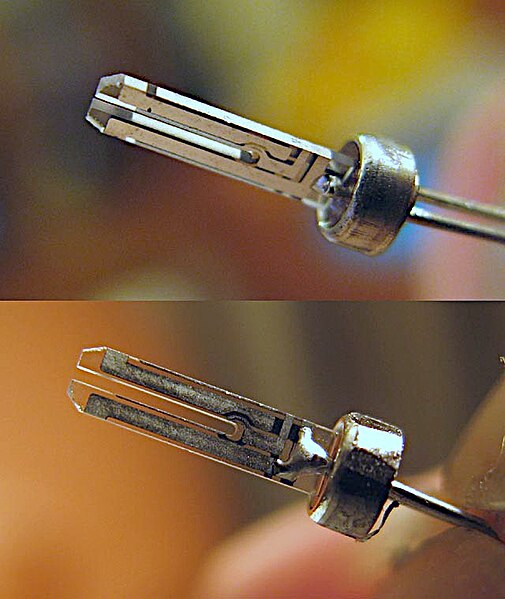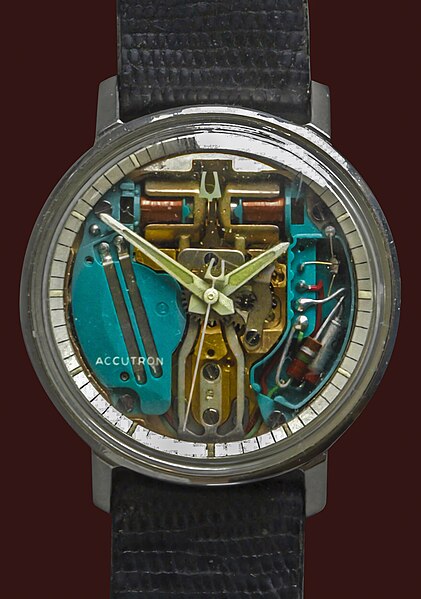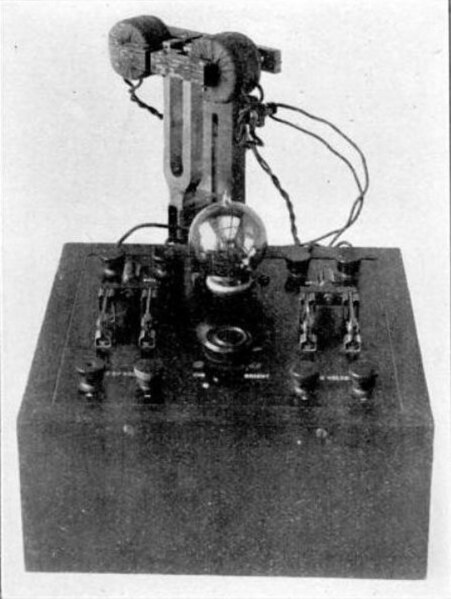Bone conduction is the conduction of sound to the inner ear primarily through the bones of the skull, allowing the hearer to perceive audio content even if the ear canal is blocked. Bone conduction transmission occurs constantly as sound waves vibrate bone, specifically the bones in the skull, although it is hard for the average individual to distinguish sound being conveyed through the bone as opposed to the sound being conveyed through the air via the ear canal. Intentional transmission of sound through bone can be used with individuals with normal hearing — as with bone-conduction headphones — or as a treatment option for certain types of hearing impairment. Bones are generally more effective at transmitting lower-frequency sounds compared to higher-frequency sounds.
Image of a Vintage Acousticon Hearing Aid By Dictograph Products Company, Made in the US, Circa 1934.
A bone conduction headset (GoldenDance brand)
A tuning fork is an acoustic resonator in the form of a two-pronged fork with the prongs (tines) formed from a U-shaped bar of elastic metal. It resonates at a specific constant pitch when set vibrating by striking it against a surface or with an object, and emits a pure musical tone once the high overtones fade out. A tuning fork's pitch depends on the length and mass of the two prongs. They are traditional sources of standard pitch for tuning musical instruments.
Tuning fork by John Walker stamped with note (E) and frequency in hertz (659)
Quartz crystal resonator from a modern quartz watch, formed in the shape of a tuning fork. It vibrates at 32,768 Hz, in the ultrasonic range.
A Bulova Accutron watch from the 1960s, which uses a steel tuning fork (visible in center) vibrating at 360 Hz.
1 kHz tuning fork vacuum tube oscillator used by the U.S. National Bureau of Standards (now NIST) in 1927 as a frequency standard.





